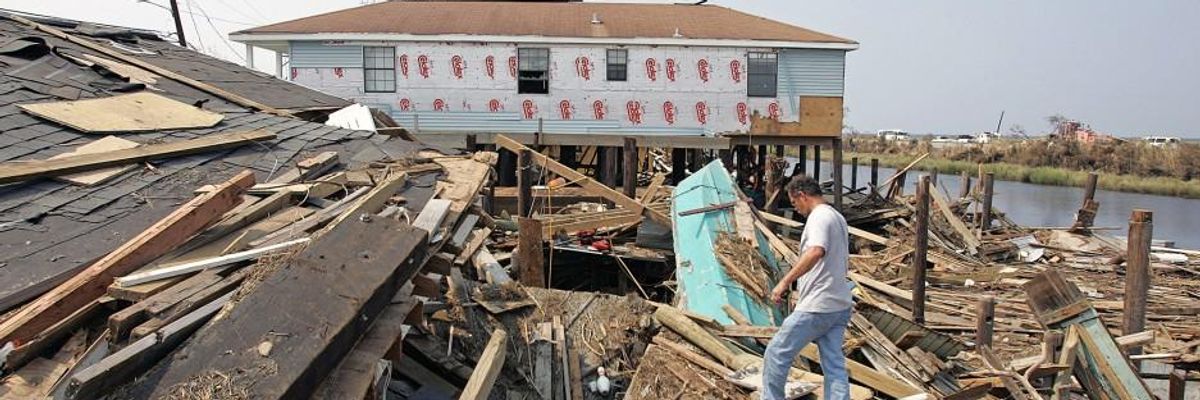In the wake of the nation's worst natural disaster since Superstorm Sandy, flood recovery efforts are now underway in Baton Rouge: Electricity is operating in certain neighborhoods, damaged floors and walls are being removed from homes, and homeowners are beginning to deal with emergency assistance and insurance--or a lack thereof.
Soon, another aftereffect of the storm will sweep Baton Rouge communities: climate refugees--people who are displaced by climate change or natural disasters--will begin the daunting task of rebuilding their lives.
Louisianans are painfully familiar with this concept. In 2005, Hurricane Katrina displaced approximately 1.5 million people from Alabama, Mississippi, and Louisiana. It was the second largest climate-driven exodus in US history--only the Dust Bowl exodus was larger. Roughly 40% of the people who fled the storm were unable to return to their pre-Katrina homes--and this burden was not shared evenly.
"Without efforts to bring residents of all income levels back home, the health and economic welfare of many low-income residents will likely worsen."
Evacuees who didn't return to their home states were more likely to come from a lower-income household, or be unemployed, than their counterparts who did return home. Poorer New Orleans residents may have been forced to move further away, as indicated by cities as far as Philadelphia providing refuge for homeless Katrina victims, but distance wasn't the only obstacle. The slow return of low-income housing--eight years after the storm, New Orleans still had less than half the number of pre-storm public housing units--kept the city's disadvantaged population scattered at best and homeless at worst.
In addition to struggles with housing, poorer communities were also likely to suffer from pollution-linked physical health impacts, which are exacerbated by higher levels of psychological trauma and stress after an event like Hurricane Katrina. One study found that low-income Katrina survivors were twice as likely to suffer poor mental health outcomes as people with greater financial resources, and another noted that people who did not return to their communities had greater levels of depression than those who were able to return home.
The thousands of Baton Rouge area residents affected by this historic flooding will face the same struggle to return home that Katrina survivors experienced. Many of these survivors were already living in poverty before the floods hit. Of the 20 parishes that President Obama declared "a major disaster," 17 had populations above the14.8% national poverty rate, and half of the disaster-declared parishes had more people living in poverty than the state poverty average of 19.8%. Two affected parishes, St. Landry and Washington, had poverty rates near 30%.
Without efforts to bring residents of all income levels back home, the health and economic welfare of many low-income residents will likely worsen.
Leaders in the public, private, and non-profit sectors need to offer pathways home that can improve the lives of these residents and strengthen their communities. This includes programs developed after Hurricane Sandy to shelter residents in their homes as quickly as possible, such as the Rapid Repairs program, and rental assistancefor low-income households. Policies that identify and strengthen community organizations serving residents can also help people find assistance and shelter in a nearby community. Rehoming residents after an extreme weather event will also mitigate some of the exclusionary impacts of gentrification, which has been a contentious issue in New Orleans since Hurricane Katrina.
Government officials seemingly recognize the need to bring residents back to their communities by trying to make their homes habitable as quickly as possible. Whether these efforts will extend to low-income residents this time around remains to be seen.
